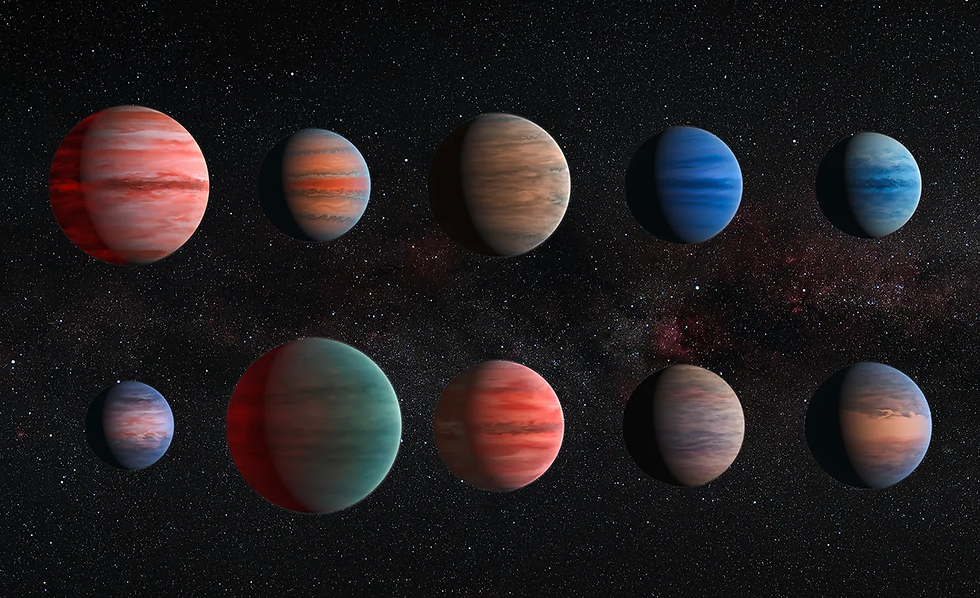Exoplanets: Is there Life Outside of our Solar System?
- techxnova
- Jul 5, 2024
- 2 min read
By Sophia V.
In our Milky Way, there are at least 100 billion planets. Scientists believe it can be up to 1 trillion and the number of planets could be more than the number of stars in our galaxy. There are 300 million potentially habitable planets, meaning they have the conditions and potential to host life. The discovery of habitable planets are key to answering the long-sought answer to the question: Are we alone in the universe? Some estimates suggest that the closest habitable planets may lie a mere 30 light-years away from our sun. These Exoplanets that orbit stars beyond our own, hold the key to discovering the secrets of the universe, extraterrestrial life, and our place within it. Scientists, using new technologies, have found over 50 exoplanets within their star's habitable zone—the Goldilocks region where conditions may be just right for liquid water to exist on the planet's surface, a vital ingredient for life as we know it.
There are different types of exoplanets. One of them is called Neptune-like, which are large gas giant and is similar to Uranus or Neptune in our solar system. Super-Earths are rocky planets and are larger than Earth but lighter than gas giants such as Neptune Their compositions range from rocks to large amounts of water and gas. Gas Giants have a low density and are similar to Jupiter or Saturn. They are massive planets made from mostly hydrogen and helium and have a lower density than terrestrial planets. Terrestrial planets are rocky with a similar size and composition to Earth. They have a higher density than Gas Giants and are often searched for potential habitability. Rogue Planets are free-floating planets that do not orbit any star and drift freely in space. They are thought to have formed on their own or been ejected from their star system. These exoplanet types have been found to orbit all types of stars including Red Giants, Red Dwarfs, and Blue Stars.
Given the large number of exoplanets just in our galaxy and the number of them that can be habitable, which is more than 300 million, why haven't we found or encountered any life on another planet? This is known as the Fermi Paradox. The Fermi Paradox poses a thought-provoking question: If there are a large number of potentially habitable planets in the universe and the conditions for life are abundant, then why haven't we detected any signs of intelligent extraterrestrial civilizations? Named after physicist Enrico Fermi, who famously asked "Where is everybody?", the paradox highlights the contradiction between the high probability of advanced civilizations in the galaxy and the lack of evidence we have of advanced civilizations. Numerous hypotheses have been proposed to address this paradox, including the challenges of interstellar travel or the limitations of our own technology and detection methods.
.png)




Comments